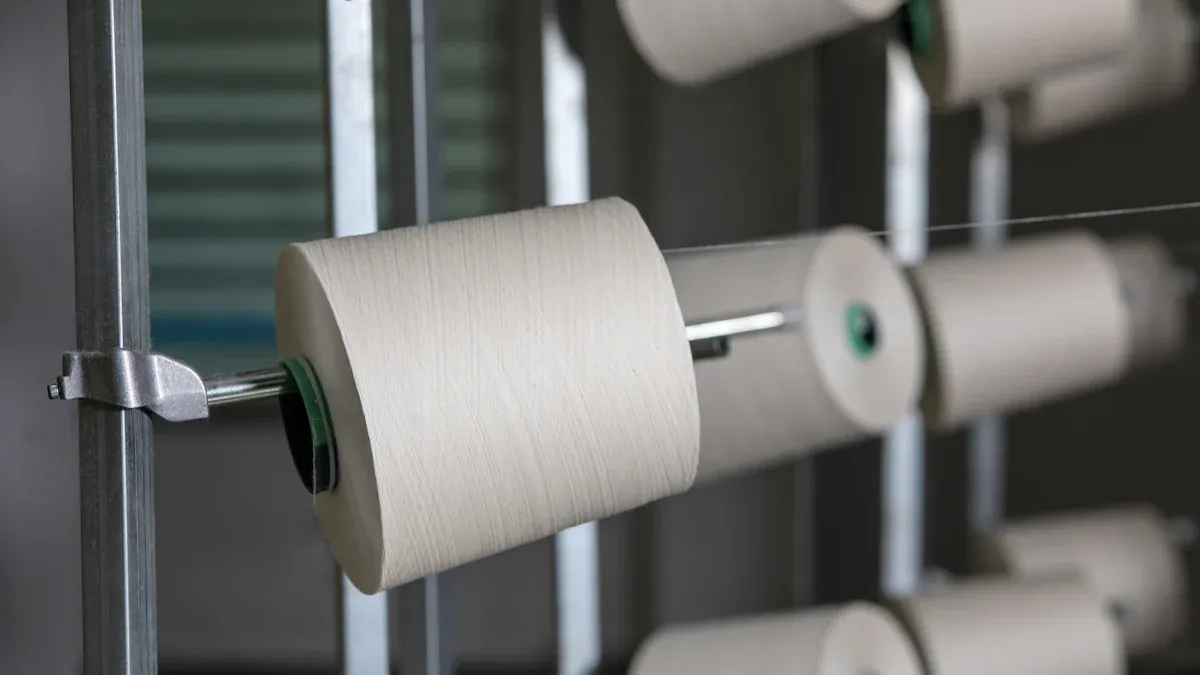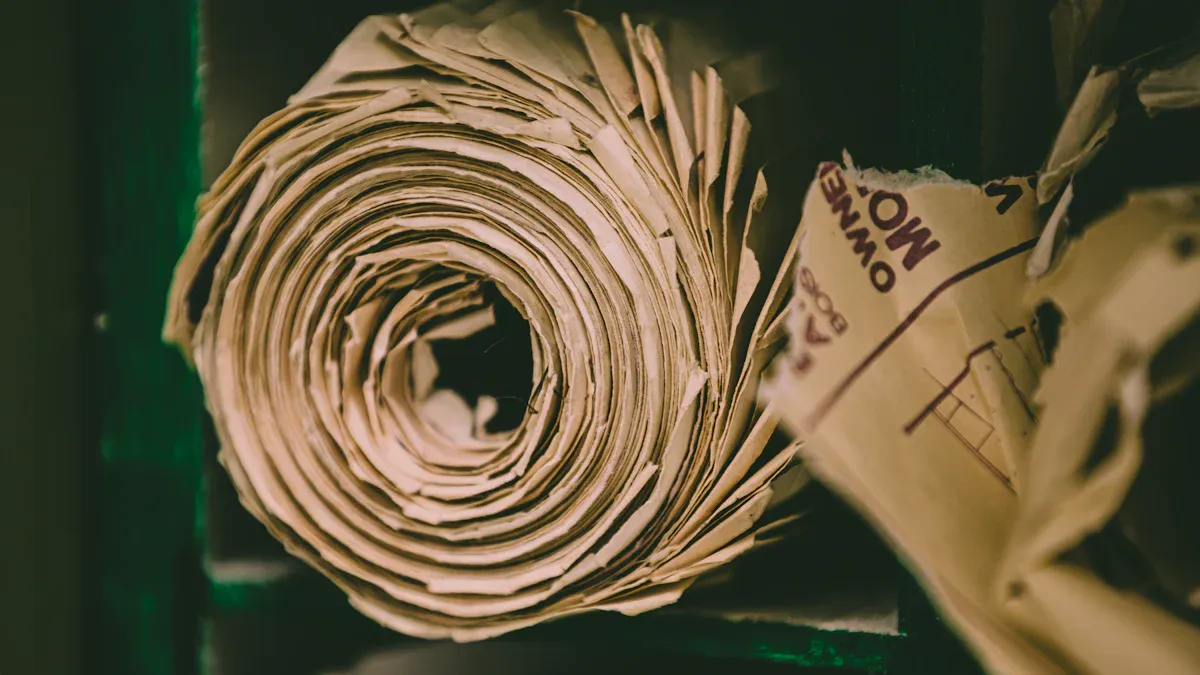
Mother Jumbo Roll technology revolutionizes paper conversion by minimizing waste and enhancing efficiency. Its precision engineering reduces material loss, ensuring optimal use of resources. For example, the recycling rate for paper reaches 68%, with nearly 50% of recycled paper contributing to cardboard production. This approach supports sustainability while meeting diverse needs, from paper tissue mother reels to jumbo roll virgin tissue paper, including jumbo roll toilet paper wholesale options.
Understanding Mother Jumbo Roll Technology

Key features of Mother Jumbo Roll Technology
Mother Jumbo Roll technology introduces advanced engineering to paper conversion processes. Its design focuses on maximizing efficiency and minimizing waste. One of its standout features is its ability to handle large rolls of paper, which reduces the need for frequent roll changes during production. This capability ensures uninterrupted workflows and enhances overall productivity.
Another key feature is its precision cutting mechanism. This technology allows for accurate sizing and shaping of paper products, significantly reducing material loss. Additionally, the system supports a wide range of paper types, including household paper, industrial paper, and cultural paper. This versatility makes it suitable for diverse applications, from producing jumbo roll toilet paper to facial tissues and napkins.
The technology also incorporates automated systems for monitoring and controlling production parameters. These systems ensure consistent quality and reduce the likelihood of errors, further contributing to waste reduction.
How it differs from traditional paper conversion methods
Traditional paper conversion methods often involve manual processes and less efficient machinery. These methods typically result in higher material waste due to imprecise cutting and frequent roll changes. In contrast, Mother Jumbo Roll technology employs advanced automation and precision engineering to address these inefficiencies.
Unlike traditional methods, this technology optimizes the use of raw materials by minimizing scraps and offcuts. Its ability to process larger rolls reduces downtime and increases production speed. Furthermore, the automated monitoring systems ensure consistent quality, which is challenging to achieve with older methods.
By integrating these modern features, Mother Jumbo Roll technology sets a new standard in paper conversion, offering a more sustainable and efficient alternative to traditional practices.
Waste Reduction Mechanisms of Mother Jumbo Roll Technology
Minimizing material loss during conversion
Mother Jumbo Roll Technology employs advanced engineering to significantly reduce material loss during paper conversion. By integrating automated systems and precision mechanisms, it minimizes trim waste that often results from manual processes. A structured approach, such as the Bi-Integrated Model, combines lot-sizing and cutting-stock problems to optimize the conversion of jumbo rolls into smaller reels. Computational experiments reveal an average cost reduction of 26.63%, showcasing the efficiency of this method.
Additionally, the technology incorporates flexible scheduling and inventory adjustments to further reduce trim loss. A linear programming model optimizes the cutting process by considering leftover reels and flexible widths. This approach ensures that every inch of the jumbo roll is utilized effectively, reducing waste and improving production efficiency.
Optimizing production processes for efficiency
Efficiency lies at the core of Mother Jumbo Roll Technology. Its ability to handle large rolls reduces downtime caused by frequent roll changes, ensuring uninterrupted workflows. Automated monitoring systems track production parameters in real time, allowing operators to make adjustments swiftly and maintain consistent quality.
The technology also enhances scheduling efficiency by utilizing an integer programming approach to optimize roll assortment. This method minimizes trim loss while addressing inventory limitations, resulting in streamlined operations. By eliminating inefficiencies inherent in traditional methods, Mother Jumbo Roll Technology boosts productivity and reduces waste.
Precision cutting and sizing to reduce scraps
Precision cutting is a hallmark of Mother Jumbo Roll Technology. Its advanced mechanisms ensure accurate sizing and shaping of paper products, minimizing scraps and offcuts. Unlike traditional methods, which often rely on manual cutting, this technology employs automated systems to achieve consistent results.
The cutting process benefits from structured decision models that optimize reel widths and leftover materials. These models reduce material loss by ensuring that each cut maximizes the use of the jumbo roll. This approach not only minimizes waste but also contributes to cost savings and operational improvements.
By combining precision engineering with automated systems, Mother Jumbo Roll Technology sets a new standard in waste reduction during paper conversion. Its ability to optimize cutting and sizing processes ensures that manufacturers can produce high-quality paper products with minimal environmental impact.
Advantages of Mother Jumbo Roll Technology
Comparison with traditional methods
Mother Jumbo Roll technology surpasses traditional paper conversion methods in several key areas. Traditional methods often rely on outdated machinery and manual processes, which lead to inefficiencies and higher material waste. In contrast, Mother Jumbo Roll technology integrates advanced automation and precision engineering to optimize every stage of the conversion process.
One major difference lies in the handling of raw materials. Traditional methods frequently result in excessive scraps due to imprecise cutting and sizing. Mother Jumbo Roll technology, however, employs precision cutting mechanisms that minimize material loss. Additionally, its ability to process larger rolls reduces downtime caused by frequent roll changes, a common issue in older systems.
Another distinction is the consistency of output. Traditional methods often produce variable-quality products due to limited monitoring capabilities. Mother Jumbo Roll technology incorporates automated systems that ensure consistent quality by monitoring production parameters in real time. This feature not only reduces waste but also enhances the reliability of the final product.
Key takeaway: Mother Jumbo Roll technology offers a more efficient, precise, and reliable alternative to traditional paper conversion methods, setting a new industry standard.
Environmental benefits and sustainability
Mother Jumbo Roll technology significantly contributes to environmental sustainability. By reducing material waste during the conversion process, it minimizes the environmental impact of paper production. This efficiency aligns with global efforts to promote sustainable practices in manufacturing.
The technology also supports the use of recycled materials. Its advanced mechanisms can handle a variety of paper types, including those made from recycled fibers. This capability encourages the recycling of paper products, reducing the demand for virgin materials and conserving natural resources.
Moreover, the reduction in waste translates to lower energy consumption. Less waste means fewer resources are required for disposal and recycling, which reduces the overall carbon footprint of the production process. Companies adopting this technology can align their operations with environmental regulations and sustainability goals.
Post time: May-13-2025
